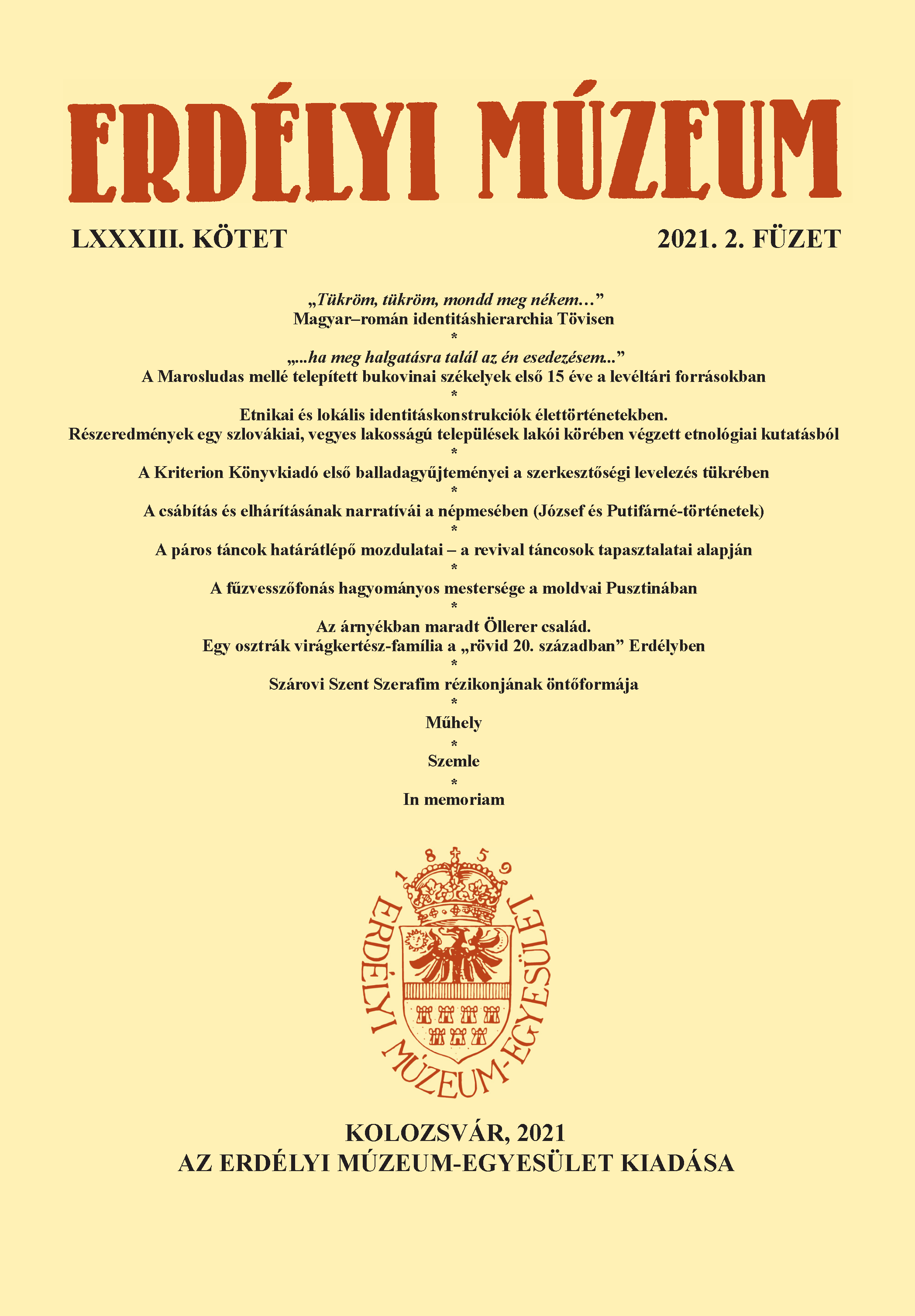Öntőformában rejlő ima: Szárovi Szent Szerafim rézikonjának öntőformája
Prayer Concealed in a Mould: The Mould for the Copper Icon of St. Seraphim
Author(s): György RuzsaSubject(s): Cultural history, Cultural Anthropology / Ethnology, 18th Century, 19th Century
Published by: Erdélyi Múzeum-Egyesület
Keywords: mould; Russian copper-alloy icons; St. Seraphim of Sarov
Summary/Abstract: The author describes a unique and rather rare casting form. Casting forms assisted the casting of copper icons, or rather copper-alloy icons like the icon of St. Seraphim of Sarov. The object in question is considered a rarity for more than one reason. On the whole, very few casting forms survive, and St. Seraphim of Sarov was seldom represented in copper icons. The study deals with 19th -century foundries amongst others and with icons made in the village of Krasnoje (in the Kostroma region) and the activity of the Old Ritualist, (Old Believer) master-crafts-man Piotr Iakovlevitch Serov. The mould under scrutiny was made in the second half of the 19th century for the copper-alloy icon of St. Seraphim. This premise is reinforced by a text fashioned in mirror writing with Cyrillic letters: “Miracle-working St. Seraphim of Sarov”. These recessed letters appeared in relief on the mould. The reader will get a brief acquaintance with the hagiography of St. Seraphim of Sarov (1754-1833), who was one of the most recognised Russian Ascetic. He was canonized in 1903. As is well known, the date of canonization often presents a basis for dating the relevant icons. In the case of the icons of St. Seraphim, however, one needs to make an exception, since very soon after his death he became extremely popular and he was almost revered as a saint.
Journal: Erdélyi Múzeum
- Issue Year: LXXXIII/2021
- Issue No: 2
- Page Range: 120-123
- Page Count: 4
- Language: Hungarian

